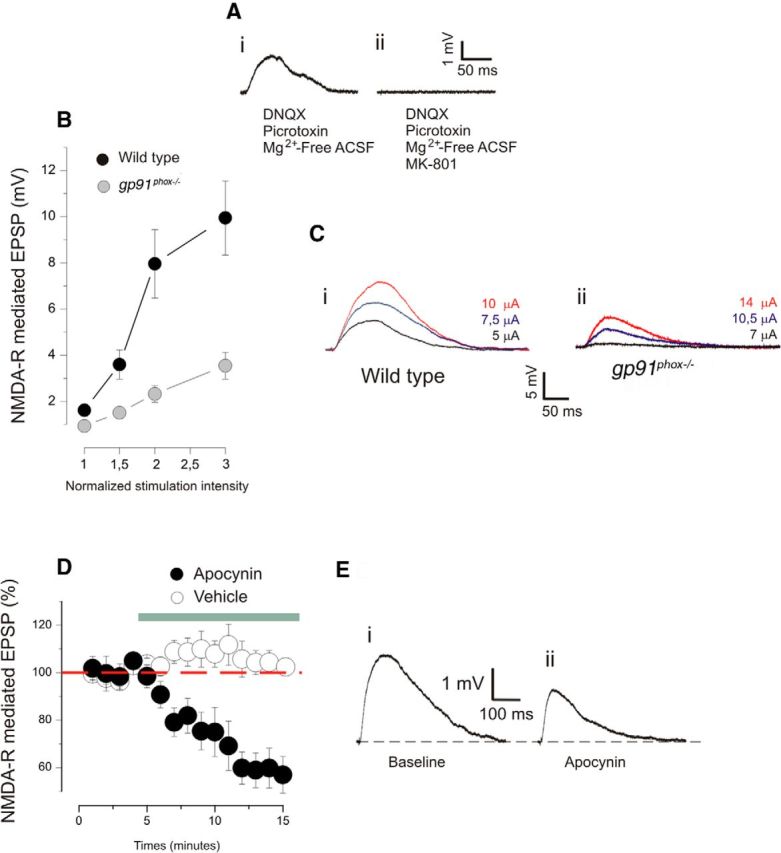Figure 5.

NMDA receptor-mediated postsynaptic responses are reduced by inhibition of NOX2. A, Examples of an NMDAR-EPSP trace before (i) and after (ii) the application of the NMDAR blocker MK-801. B, Magnitude of NMDAR-EPSPs recorded from slices obtained from wild-type and gp91phox−/− animals. The stimulation intensities are normalized with respect to the intensity value evocating the minimal response. Plotted data are average ± SEM. C, Examples of an NMDAR-EPSP recorded in slices derived from wild-type (i) and gp91phox−/− (ii) mice. In gp91phox−/− animals; the amplitude of the NMDAR-EPSPs is significantly reduced (wild-type: 16 slices, 6 animals; gp91phox−/−: 13 cells, 5 animals; p < 0.0001 on a two-way ANOVA), and this effect was more pronounced with higher intensities of stimulation (p < 0.001 on a two-way ANOVA). D, Magnitude of NMDAR-EPSPs before and after the application of apocynin or vehicle in wild-type animals. Plotted data are average ± SEM. E, Examples of NMDAR-EPSPs traces showing the amplitude before (i) and after (ii) the application of apocynin. With the presence of apocynin, the NMDAR-EPSPs are significantly reduced (7 slices, 4 animals; p < 0.01 on a paired t test), whereas the application of vehicle produced no significant change (7 slices, 4 animals; p > 0.1 on a paired t test).
